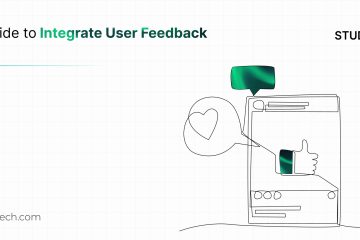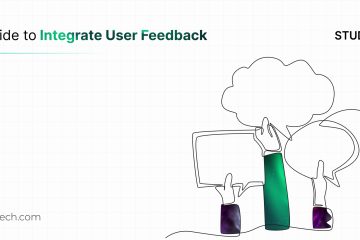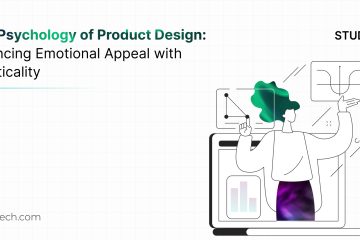Did you know that you have just about 8 seconds or less to engage users on your websites? If that is the time you have to make an impression, it is a no-brainer that you think out of the box to devise novel ways to capture the attention of your users. The stats and numbers are enough proof! Take a look at these stats and you’ll be surprised to know that personalization is an absolute necessity and the lack of it costs you significant revenue slips.
- According to a report by Econsultancy, almost 52% of the digital marketers existing globally agree that the ability to personalize content should be a fundamental part of their marketing strategies.
- Another article by Forbes states that 81% of consumers prefer those brands that take the initiative to get to know them and understand when to approach them.
- Monetate conducted a study and found that a staggering 95% of those companies that got 3 times ROI from their personalization methods, experienced a surge in profits.
What does all of this tell us? Personalized user experiences are at the center of a successful UX strategy.
Why does personalization matter?
Customers form part and parcel of any business and it is necessary to have a strong connection with them. One way to achieve such a connection is through personalization. If you are an organization that wants to build a product or service that appeals the most to your users, you must know that personalization is key! From helping to build greater customer loyalty to improving customer satisfaction, some of the major advantages of personalization are the following:
- Through personalized digital campaigning, it becomes easy to target and acquire new customers
- Personalization leads to an increase in order values (cross-sell/upsell) and better conversion rates
- It enhances the relevance of the branded experience
- Personalized UX reduces the customer churn numbers through more worthwhile experiences
Though personalization is not an all-purpose method, a clear-cut personalization strategy can help in reaping all benefits. A unique strategy will improve the brand name and streamline your goals allowing you to stride towards increased ROI. Let us take a detailed look at what one should know before building a great personalized design.
Identify your target audience
Deciding on your target audience is vital for effectively personalizing your UX. With a crystal-clear idea about who you are serving, you can group your target audience as per key differences like demographics, past behaviors, attributes, segment or interests in the customers’ buying process. Once these key differences are analyzed, customers will become the basis for the segmentation and rule-based campaigns. Conduct extensive research extensively and make sure that you understand the pulse of your customers to give them what they need.
Be clear with your goals
As per Evergage, the best way to hit the bullseye is by offering a personalized experience to the users is through a well-defined strategy. Once you have identified your target groups and found why you should go for personalization, begin with answering questions pertaining to where and what.
Think broadly and plan where you wish to introduce personalization, is it your website, mobile app, emails or advertisements? Ensure that any channel you choose must allow regular communication with your customers. If you opt for personalizing the website or mobile app, go beyond the content and include all processes and functionalities that can streamline users’ experiences. Personalize images, features, and other functionalities. Even mapping the personalized customer journeys and making them coherent and consistent, will come in handy.
Next, decide what you wish to do for the identified target audience through the chosen channels to achieve your goals. Make a list focusing on ‘what’ types of experiences you want to deliver:
- Recommend your content or products
- Personalize the search results or navigational feature
- Promote events/webinars to specific locations or people with particular interests
By defining proper goals and targeting a specific audience, one can easily decide the amount of effort required to develop an outstanding personalized UX.
What’s the next step?
Now that your goals and target audience have both been identified, all you have to do is make a list of the major elements of the app or website that has to be personalized. According to the profiles and patterns in behaviors of the users, you can personalize any element of your app.
Some of the common elements that you can experiment with are images, content, features, push notifications, articles and many more. Here is a list of the common approaches that can be used to add a touch of personalization to your application.
Information Architecture: Does the structure make sense?
By designing the application’s or the website’s information structure, you can check if it is satisfying the necessary business strategies. That is what ‘Information Architecture’ or IA is all about. Primarily, IA focuses on providing users with a seamless navigation menu irrespective of the browsers they use.
For instance, navigational personalization is one such method that can be used to customize how you would want your users to navigate. Based on the information from the purchase history and browsing behavior of users, you can prioritize the elements in a website or mobile app to appear in an area where users can clearly see it the next time they visit it.
Interaction Design: How to engage with users?
Various elements such as aesthetics, fonts, icons, colors, images, motion, graphics, sound, etc. come under ‘Interaction Design’. Users interact with a product/application as per a conceptual design and ‘Interaction Design’ is about how you can engage users with an out-of-the-box design solution.
Modular Design Systems: How to cover all processes?
Along with bringing all functionalities and processes under one umbrella, you will also have to handle many flow variations as target groups. For offering the maximum benefit of personalized experience to your users, it is always better to go for a modular design system. How should you go about this?
Break your design into smaller parts or modules that will be independent but can be combined into a larger system later. Personalized modular design components will let you design pages for your target groups easily. This kind of design system is particularly suitable for large scale industries such as e-commerce and finance.
Unique Content Strategy: Is content relevant?
Well, delivering content of higher relevance to users as per their geolocation and behavior is necessary. That is why contextual messaging personalization is used. By allowing you to customize messages based on factors like location, type of device or browsing patterns, one can connect with users in a better way.
However, do ample amounts of research on what your target users are interested in. Use reliable sources for this purpose as the gathered information must be accurate. Ensure that personalization is not something you have to do just because you wish to follow the crowd. It must add value to your brand. So, personalize in such a way that it is subtle and yet keeps your users connected to your application/website.
Personalization is different from customization
While both personalization and customization contribute towards more relevant user experience, they are different from each other. Personalization does not require any effort from the customer. On the other hand, customization needs users to modify their experience voluntarily. So, the system’s predictive algorithms do the personalization and users who want more control of the user interface, turn to customization.
In a nutshell
If you want to make your website or application more powerful and sought-after, personalization is the key. It can change the game of your business and bring a better connection with users. One can not only know and understand their users’ preferences well but also build a rich and engaging UX.
In today’s product development contexts, if you are targeting users with a wide range of interests across multiple geographies, then personalization should be your go-to. Especially with service design garnering a lot of attention today in terms of using your website or application to build that much-need rapport with your customer, it’s important to get your fundamental concepts right. Are you also a player in the UX design game? Get in touch with us if you are one.


